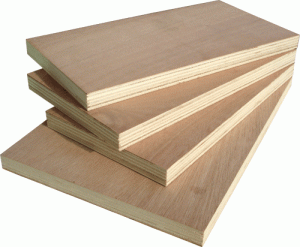How Thick Is Plywood?
Plywood Thickness


Plywood can be divided into two different groups when it comes to thickness variations. Sanded panels and un-sanded panels.
Sanded Plywood Panels
Sanded plywood panels (often used for flooring, cabinetry and other finished applications) typically range in thickness from 1/4 inch to 1-1/4 inch in 1/8 inch intervals. They are manufactured to a tolerance of 1/64 of an inch up to 3/4 of an inch with thicker panels being +/- 3% of the total. It’s important to remember that the tolerances are from the factory and don’t include changes due to temperature and humidity levels after the plywood leaves the factory.
Un-Sanded Plywood Panels
Un-sanded plywood panels are typically manufactured from 5/16 of an inch up to 1-1/4 inches. The tolerance for un-sanded plywood is 1/32 of an inch up to 13/16 of an inch and +/- 5% for thicker plywood. These panels typically come in thickness ranges of 1/16 of an inch.
Popular Plywood Thicknesses
Quite often you’ll hear someone say they are sheathing their house with half inch plywood. Well the fact is if they are sheathing (most likely un-sanded plywood) then they are most likely using a piece of 15/32 inch thick plywood. Remember the manufacturer has a tolerance of 1/32 of an inch. If you specify three quarter inch sanded plywood then you’ll most likely get a piece that is 47/64 of an inch thick (1/64 of an inch tolerance).
I hope this information helps clear up how thick plywood panels really are. Many people get confused at the lumber yard when all they see is 15/32 (1/2″) plywood, 19/32 (5/8″) plywood or 23/32 (3/4″) plywood.
Recent Posts
Framing Stick Nailer vs Coil Nailer
Which is Better a Stick Nailer or Coil Nailer? Framers have many choices in nailers…
How Many Roofing Nails Per Square of Shingles
Estimating How Many Nails for a New Roof When it comes to estimating materials for…
Composite / PVC Decking – Layout Tips & Advice
Composite / PVC Decking Layout Tips and Advice Composite and PVC decking have really changed…
Benefits of an ERV System (Energy Recovery Ventilator)
Benefits of ERV Systems (Energy Recovery Ventilator) If you're building a new home or doing…
Vermiculite Attic Insulation Abatement
Vermiculite Attic Insulation If your home was built before 1990 there is a chance it…
Nuisance Tripping of AFCI (Arc Fault) Circuit Breakers
Arc Fault (AFCI) Circuit Breakers Tripping Often An arc-fault circuit interrupter (AFCI) or arc-fault detection…
View Comments
To add an additional point... There are specific undersized router bits that correspond with plywood thicknesses. Also setup your dado stack for the smaller thickness but realize some slight shimming may be necessary (and then an additional pass) to get the fit perfect.
You are absolutely correct. For those trying to get a "tight" fit on dado joints the router diameter is crucial.
You guys are awesome to offer this guide. I work at Home Depot and my conversion chart went missing. You're a lifesaver
THANKS!!